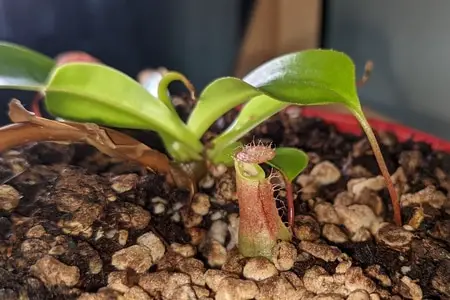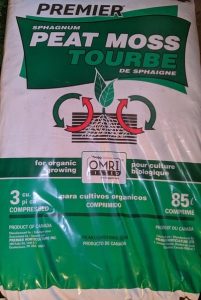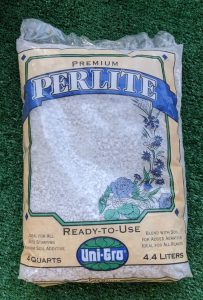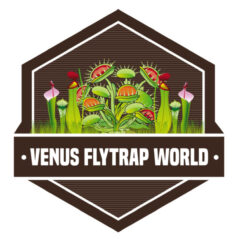Employing suitable soil for Pitcher plants is critical to keep them healthy. Choosing and buying the right potting media can be challenging for new Nepenthes owners. In this guide, I will explain all you need to know to select the correct soil for your Pitcher plant.
Pitcher plants require soil that preserves moisture and has drainage. Sphagnum moss, peat moss, orchid bark, perlite, and horticultural sand are common elements present in most Pitcher plant soil mixes like, for example, a 2:1 combination of long-fibered sphagnum moss and silica sand.
When I first started growing carnivorous plants, I was unfamiliar with their soil requirements. But, after some research and some personal experience caring for my plants, I have learned how to make and buy carnivorous plant soil for Pitcher plants, sundews, Venus flytraps, and many others.
This guide will help you select the suitable soil for your plant and decide between making it yourself or buying it online. I have included some links to online shops to make it easy for you.
For a detail explanation on Pitcher plant care, make sure to read this Pitcher Plant Care Guide I wrote for you.
Suitable Potting Media for Nepenthes
Pitcher plants are very unique in appearance and also very unique in their specific requirements.
Nepenthes are very sensitive to minerals. Any type of nutrients present in the soil or the water can be very harmful to these plants. Pitcher plants thrive in low-nutrient environments.
Never plant Pitcher plants in standard potting media, such as Miracle-Gro, succulent soil, or cactus soil. Instead, employ carnivorous plant soil; it has low mineral content and usually has elements that help drainage and aeration.
Carnivorous plant soil for Pitcher plants usually contains one or multiple of these elements:
- Long-fibered sphagnum moss
- Peat moss
- Silica sand (horticultural)
- Perlite
- Orchid bark
The links can take you to some options online
You can buy carnivorous plant soil (suitable for your Pitcher plant). I have used a couple of different soil mixes in the past few years. Below, I share links to some I have used in the past. The links will take you to Amazon.com. A bag of soil costs 10-15 dollars and is plenty to pot most medium-sized Nepenthes.
It is also possible to make pitcher plant soil by following some general recipes. The following section guides you through the process:

Pitcher Plant Soil Recipes
Buying premade Pitcher plant soil mixes guarantees the potting media is appropriate for your plant. If you decide to make your own soil, you must be extra careful, as mistakes can ruin your soil mixture.
Each element you employ to make the soil must be pure; it can’t contain any nutrients or fertilizers. For example, make sure you buy pure peat moss instead of MiracleGro peat moss. MiracleGro is packed with minerals that can kill Pitcher plants.
The pictures below are some examples of nutrient-free perlite and peat moss:


The following are some examples of Pitcher Plant soil recipes:
- 100% long-fibered sphagnum moss
- 100% peat moss
- 2:1 Long-fibered sphagnum moss and silica sand
- 2:1 Long-fibered sphagnum moss and perlite
- 2:1 Peat moss and perlite
- 3:1:1 Peat moss, sand, and perlite
You can plant Nepenthes in pure peat or sphagnum moss, but it is not the best option. Both types of potting media are appropriate for carnivorous plants as they retain moisture and contain no minerals; however, they lack drainage. For best results, avoid employing pure moss for Pitcher plants. Instead, add some perlite or silica sand to help break up the soil and prevent soil compression.
Perlite or sand in the soil can make a big difference when growing carnivorous plants. They prevent root rot and preserve the ground for more extended periods. Also, they promote growth, thanks to the added aeration.
The recipes on the list are some ideas of soil mixes I have used in the past. Make sure you buy the correct components and do not worry too much about exact rations. If you add a little extra or less sand, your soil will still be appropriate. Just make sure you follow the recipe ratios broadly.
How to Pot and Repot a Pitcher Plant
Pitcher plants can stay in the same pot (here are my pot recommendations) for many months or even years without trouble, however, repotting provides many benefits.
Follow the steps below to pot or repot your Pitcher plant:
Repot your Nepenthes when you plant outgrows the container, the soil looks compressed and mushy, or when it has been 1-2 years since the last repot. Fresh potting media encourages growth and prevents health issues such as rotting and mold.
- Gather carnivorous plant soil, a pot (like this), and pure water.
- Moisten the soil in your Pitcher plant by watering it.
- Use your hands to loosen up the media in the edges of the pot.
- Gently, pull the plant and the soil out of the container.
- Employ some pure water to remove as much of the potting media as possible. For best results, try to remove most of the old media.
- Trim any dead leaves, roots, or foliage. Bare root plants are easy to trim.
- Prepare the new soil by moistening it ahead of time with pure water.
- If you employ peat moss, place the humid moss in the pot, make a hole in the soil and insert the plant. If you use sphagnum moss, grab a chunk of moss and surround the roots with it, then insert it all into the pot.
- Water the pot from the top to set the soil.
- Palpate the soil and look for any air gaps. If necessary, add more potting media. The ground must be set in place but should not be compacted.
- Pay extra attention to your plant in the next 1-3 weeks as it might be down due to the shock of the repotting.
The video below also explains the repotting process for Pitcher plants:
Make sure you gather all the materials you need to pot your nepenthes before hand.
The best pots for Pitcher plants have drainage holes and are made up of plastic, glazed ceramic, or wood. Avoid clay and terra cotta pots. In terms of sizing, 5-inch pots are suitable for medium-sized plants.
Plan your repotting ahead of time by looking at the calendar and researching about the species you own. For example, some Pitcher plants undergo dormancy, while others do not experience major changes through the year. Such details can affect the recommended timing for repotting.
The best time to repot Nepenthes is at the end of dormancy or right before the growing season starts. Avoid repotting Pitcher plants during the growing season, as the shock can slow down their growth. Also, avoid repotting Pitcher plants more than once a year.
Besides the soil and potting requirements, there are many other considerations to keep in mind when growing Pitcher plants. The following section gives you a concise guide on Pitcher plant care.
Pitcher Plant Care
Follow these care instructions to build a proper setup and keep your Pitcher plant alive:
Lighting Requirement: Nepenthes thrive in sunny locations. Provide more than 10 hours of light exposure through natural or artificial light every day. You can grow your plant outdoors and rely on natural lights or grow them under grow lights.
LED and fluorescent are common choices when growing Nepenthes indoors. Artificial lighting for nepenthes does not have to be complex. I have used this small plant light to grow some of my carnivorous plants without trouble: https://amzn.to/41Orn40.
Watering Requirements: Never water pitcher plants with tap water or bottled water, as these often contain too many minerals for most carnivorous plants. Only employ distilled water, rainwater, or reverse osmosis water.
Water often, so the soil remains humid at all times.
For detailed instructions on how to water Pitcher plants the right amount, make sure to read this guide.
Soil: Always employ nutrient-free ground. A mixture of peat moss or sphagnum moss and perlite or silica sand are suitable potting media options. Consider using a combination of 60% long-fibered sphagnum moss and 40% silica sand for nepenthes.
Humidity: High humidity is beneficial for most Pitcher plants. Humidity levels over 50% are recommended. If you live in an arid area, consider employing a humidifier. Without enough moisture, pitcher plants suffer and stop producing pitchers (in this article I share a method to make your pitcher plant start producing pitchers) (in this article I share a method to make your pitcher plant start producing pitchers).
Trimming: You can trim dried up leaves once they have withered completely. Avoid trimming healthy leaves at all costs.
Feeding: Pitcher plants capture bugs on their own. In most cases, there is no need to feed the plant manually. However, if you grow pitcher plants indoors, they might not have access to nutrients.
Feeding pitcher plants is straightforward. Just drop a bug inside a pitcher once or twice a month. A single bug can provide nutrients for the whole plant.
Fertilizers: Not required.
Pots: Employ plastic, glazed ceramic, wood, or glass pots with drainage. Avoid terra cotta, clay, or metal pots, as these materials can leach minerals to the soil and harm pitcher plants.
Dormancy: Some pitcher plant varieties require dormancy.
Outdoor vs. Indoor growth: Assess if your indoor or outdoor environment is the most suitable for your nepenthes. A good strategy is to try to replicate the environment of their natural habitat.
If you are interested in indoor growing, I have written a care guide to help you grow Nepenthes as a houseplant. Make sure to check it out!
Recommended Products for Growing Carnivorous Plants
Finding the best pots, lights, and soil for carnivorous plants is difficult. I have grown carnivorous plants for over 5 years, and these are the products I use. The links will take you to Amazon to view the prices and full specs:
- Carnivorous Plant Soil
- Carnivorous plant soil: https://amzn.to/422yLZa
- Artificial Lighting
- Small plant light for 1-2 plants: https://amzn.to/3oQsmSj
- T8 LED light fixture for multiple plants (6500k Cool White): https://amzn.to/3uWoeh2
- Pots and Miscellaneus
- Nursery pots for single plants: https://amzn.to/3oL8YGq
- TDS meter to measure water quality: https://amzn.to/3g8VKLI
- Dried crickets to feed carnivorous plants: https://amzn.to/34QEnKv

